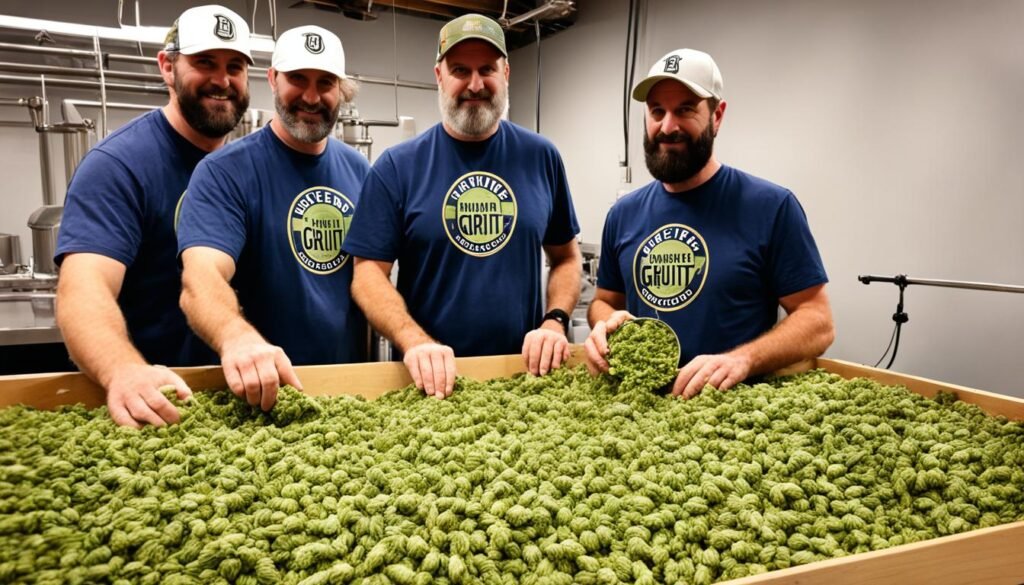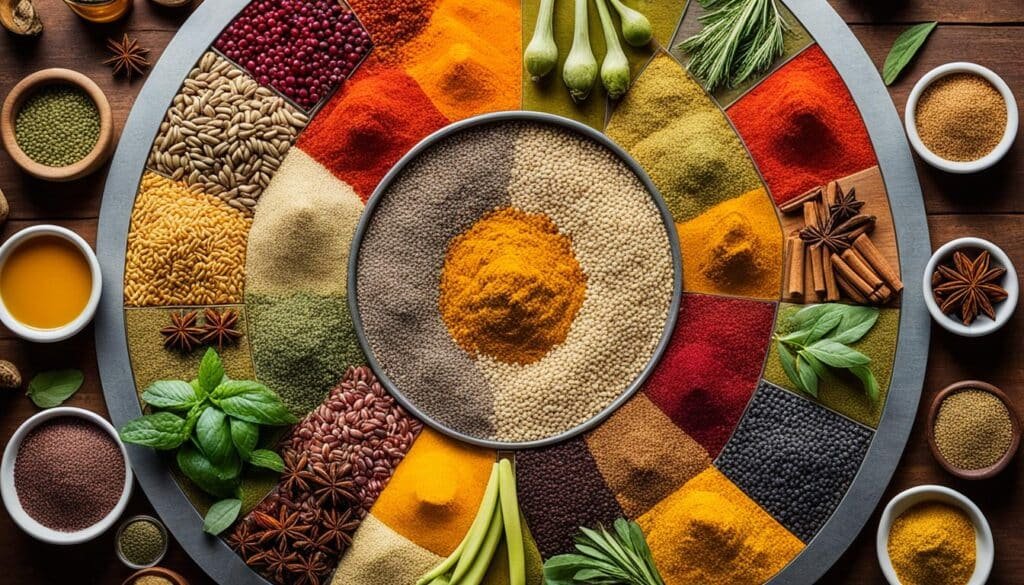Amid the vast expanse of brewing traditions, the question arises, can you make beer without hops? Intriguingly, the answer harkens back to ancient times when hop-free beer recipes offered a different palate of flavors to beer enthusiasts. Gruit, a historical predecessor to modern hop-infused ales, provides a rich tapestry of tastes utilizing alternative beer ingredients. This tradition illustrates that the absence of hops does not equate to a lack of complexity or enjoyment in the brewing craft. We delve into a world where botanicals outside the realm of hops impart unique character to each brew. So let us explore this nearly forgotten art and see what it reveals about the possibilities of beer’s flavor profile and sensory impact.
Key Takeaways
- Discovery of authentic gruit recipes expands the boundaries of traditional beer flavors.
- Understanding the historical significance of hop-free beer recipes offers insight into brewing diversity.
- Alternative beer ingredients such as Yarrow and Bog Myrtle can successfully replace hops, offering unique taste experiences.
- Revival of ancient brewing methods underscores a growing curiosity and appreciation for non-hop based beers.
- Brewing without hops introduces a new dimension to the beer crafting process and product outcome.
Understanding the Role of Hops in Traditional Beer Brewing
When exploring the history of beer brewing without hops, one discovers that hops, now synonymous with traditional beer ingredients, were not always the cornerstone of beer brewing. Instead, diversity in flora lent earlier brews an array of flavors and functions, with the introduction of hops being a relatively modern phenomenon. The Reinheitsgebot laws of 1516 crystallized hops’ significance, propagating their role as a natural preservative and attributing beer with a more uniform taste and extended shelf-life. To understand why some modern-day brewers are seeking hops-free brew methods, it’s essential to recognize the different characteristics that pre-hops beer ingredients contributed to the final brew.
Investigating beer brewing before the prevalence of hops reveals a period where gruit ruled — a time when beers were more than a refreshing beverage, often infused with herbs that presented lively, stimulating effects, a contrast to the calming brews the hops produced. Among the primary elements of gruit were botanicals like yarrow, bog myrtle, and marsh rosemary, each contributing to the dynamic taste and potent restorative qualities. This tradition underscores that traditional beer ingredients were much more varied than today, where hops nearly monopolize flavoring and preservation.
Each era’s brewing practices tell a story about its society, with the quiet substitution of gruit’s vivacity for hops’ sedation marking a significant turn in communal attitudes towards beer consumption. Hops gained favor due to their antibacterial properties, enhancing beer’s longevity and transporting the beverage from local significance to a wide-reaching commodity while simultaneously imparting a distinct bitterness through alpha acids released upon boiling. This trade-off led to a standardization of flavor profiles and the segregation of the once prevalent gruit blend from the repertoire of mainstream beer brewing.
In light of craft brewing’s renaissance, a renewed interest in hops-free brew methods is taking hold. As brewers embark on the uncharted territory of forgotten or sidelined ingredients, pushing the envelope of flavor and experience, the beer industry is undergoing a vibrant shift. This shift reopens debates about beer’s potential as a comprehensive sensory experience and invites a new generation to savor a taste that extends beyond the confines of hops’ bittering dominance, tapping into the rich tapestry of beer’s multifaceted history.
Can you make beer without hops?
Provoking interest among brewing enthusiasts, the quest for non-hop beer making unravels a timeline extending back to eras when hops were not at the heart of beer profiles. Pivotal to this narrative is the historically significant Gruit Ale, a brew sustaining popularity pree-1500s, and leaving a profound legacy on the historical beer brewing landscape.
Historical Precedence for Hop-Free Beer: Gruit Ale
The story of Gruit Ale sheds light on the meticulous craft of brewing beer with substitutes for hops. A cultural tapestry, each region’s gruit embodied a character of its own, with herbs such as Yarrow, Bog Myrtle, and Marsh Rosemary conferring not just flavor but also preservative properties. Recognized for their psychoactive and medicinal attributes, these botanicals imparted an identity to ales that was both distinct and diverse. Books such as “Sacred & Healing Herbal Beers” document this rich brewing heritage, evidencing the skill and creativity inherent in hopless beer production chemistry.
Exploring the Chemistry of Brewing with Alternatives
The enchanting brews of yesteryears hinged on an altogether different chemistry from modern standards. Substitutes such as Yarrow teem with thujones, alkaloids mirroring the neurological stimulatory pathways activated by compounds like THC. Moreover, the intricate nature of compounds found in these early-days ales points to a vibrant landscape of flavor and effect awaiting rediscovery in today’s brewing scene. As a revival of Gruit Ale takes hold, the windows of possibility creak open wider, implying a promising era for innovation in brewing beer with substitutes for hops.
The Resurgence of Gruit: Modern Interpretations of Ancient Brews

With a palpable gruit revival underway, contemporary brewers are continuously developing new hop-free beer recipes that hark back to a time before hops dominated the brewing landscape. These modern gruit ales are not just a nod to tradition but represent a full-fledged return to the botanical roots of brewing, with a creative twist honoring the craft.
Brewers are engaging in a renaissance of sorts, looking to ancient records and archaeological findings to recreate the rich tapestry of flavors inherent in gruits. This revival is driven by a curiosity to explore beyond the hop vine and a desire to reintroduce the varied effects of historic herbal blends.
With the modern gruit ale, we’re not only recreating history but adding our chapter to it. This is a movement about exploring complexity in flavor without relying on the traditional palette hops provide.
The renewed interest is not merely an exercise in brewing antiquity; it’s a practical demonstration of the versatility and sustainability of using locally sourced herbs. As patrons’ palates evolve and seek out new experiences, hop-free beer recipes are gaining popularity, offering drinkers an alternative that reflects both the ancient and the avant-garde of brewing arts.
- Exploration of ancient botanicals like Yarrow, Bog Myrtle, and Marsh Rosemary
- Incorporation of non-traditional herbs to augment traditional gruit recipes
- Commitment to sustainability through the use of local and seasonal ingredients
- Fostering a community of brewers to encourage the gruit revival
As the craft beer movement thrives, modern brewers continue to expand the public’s conception of what beer can be. In South Africa, where innovation within the craft beer scene is burgeoning, the embrace of modern gruit ales speaks to a global appreciation for diverse brewing methodologies and the thirst for authentic experiences that challenge the status quo.
Alternative Beer Ingredients and Their Unique Qualities

The conversation around alternative beer ingredients is gaining momentum as craft beer enthusiasts and brewers explore the rich tapestry of flavors and effects that differ from the traditional hop-based brews. As the no hops beer brewing process becomes more prevalent, the exploration of exotic herbs and spices has opened the door to a world where the bittering, aromatics, and even the psychoactive influence on drinkers can vary significantly from what we have come to expect from conventional beers.
Natural Bittering Agents: Beyond the Hop
When it comes to finding a hop substitute in brewing, nature offers a plethora of options. Many botanicals can impart a bitterness to beer that not only preserves it but gives each brew a distinctive character. Ingredients like Wormwood, famous for its use in absinthe, and the tartness of Hibiscus are just some of the alternatives that innovative brewers are using to challenge the taste buds of the adventurous drinker.
Aromatics and Flavorings: A New World of Beer Tastes
With the emergence of alternative brewing ingredients, the scent and flavor profile of beer have expanded into new realms. The use of ingredients such as Heather, Sweet Gale, and various roots and spices contribute layers of complexity that traditional hops cannot provide. This infusion of diverse tastes enriches the craft beer scene, offering a sensory journey through uncharted territories of beer’s potential.
|h3>Impact on Beer’s Psychoactive Effects: Sedatives vs. Stimulants|
The effect of beer on the human body can sway between sedative and stimulant, largely due to the properties of its components. Brewers who experiment with sedative vs. stimulant beer effects wade into an area that affects the drinker’s experience, almost on a spiritual level. The choice of ingredients can lead to either more relaxing brews or ones that invigorate and energize, setting the tone for the consumption experience.
Before hops dominated the scene, beers often had stimulating properties due to the gruit mixture of herbs. Modern brewers are reintroducing these combinations to recreate the uplifting effects and revive the ancient importance of these brews.
| Ingredient | Role in Beer | Bitterness | Aromatic Profile | Effect on Drinkers |
|---|---|---|---|---|
| Yarrow | Natural preservative, bittering agent | Medium | Earthy with hints of citrus | Stimulant |
| Juniper Berries | Flavoring | Mild | Woody, piney | Sedative (in mild quantities) |
| Wormwood | Bittering agent | High | Herbal bitterness | Stimulant |
| Heather | Aromatic flavoring | Low | Floral, slightly sweet | Neutral |
Understanding the unique profiles of these alternative beer ingredients not only enhances the brewing palette but also allows consumers to tailor their drinking experience. The endless combinations and effects craft beers can attain signify a bright, diversified future for the industry, all while paying homage to the centuries-old traditions that once defined the flavors of our ancestors’ ales.
Non-Hop Beer Making: The Brewing Process
The art of crafting beer without the use of hops beckons a revival of ancient traditions, where the no hops beer brewing process cultivates a unique taste profile and a distinct brewing journey. Unlike the traditional use of hops for their bittering and preservative qualities, alternative brewing techniques lean on a varied spectrum of herbs and botanicals. This alternative process begins much like the conventional method, with the mashing and fermenting of grains. Yet, it is during the boiling phase where the divergence is most pronounced, where carefully selected herbs are introduced to the wort, imparting the requisite bitterness and complex flavors.
Employing alternative brewing techniques, the modern brewer seeks not just to replicate the bitterness that hops would typically provide but also to explore a plethora of unique flavors and sensations. Botanicals such as Sweet Gale, Mugwort, or Juniper berries can be calibrated to imbue the brew with aromatic nuances and flavor complexities that hops cannot. The selection and preparation of these ingredients require a nuanced understanding of their individual properties to achieve the desired end product. Calibration of quantities, timing, and temperature are all critical factors in ensuring that these herbs beautifully complement the malt and yeast, rather than overwhelm them.
Understanding the shift in the no hops beer brewing process means recognizing that these brews might often bear a closer resemblance to their historical ancestors than to today’s mainstream beers. Yet, this doesn’t denote a step back in quality or enjoyment. On the contrary, it offers an expanded palette of tastes and experiences for beer enthusiasts and casual drinkers alike. As South African palates continue to evolve and seek new flavors, the arena of non-hop beers serves as a testament to the ingenuity and adaptability of the craft brewing community—providing an authentic, immersive experience into the rich tapestry of brewing history.
FAQ
Can you make beer without hops?
Yes, it is entirely possible to make beer without hops. Historically, beers were often made with a blend of herbs known as gruit, which provided flavor, bitterness, and preservation before hops became the dominant brewing ingredient.
What is Gruit Ale?
Gruit Ale is a type of beer that predates the widespread use of hops and utilizes a mixture of herbs and botanicals like Yarrow, Bog Myrtle, and Marsh Rosemary for bittering and flavor instead of hops.
What are some alternative beer ingredients that can replace hops?
Herbs such as Yarrow, Bog Myrtle, and Marsh Rosemary, Juniper berries, Mugwort, Wormwood, and Heather can be used as alternatives to hops in brewing to impart bitterness, flavor, and preservative properties.
How do hops contribute to traditional beer brewing?
In traditional beer brewing, hops provide bitterness to balance the sweetness of malt, contribute to the beer’s aroma, and have antibacterial properties that preserve the beer and extend its shelf life.
What are the potential benefits of brewing beer with substitutes for hops?
Brewing with substitutes for hops can result in unique flavor profiles, allow for historical recipe revival, and offer different psychoactive effects due to the varied chemical compositions of the alternative herbs used.
How does the no hops beer brewing process work?
The no hops beer brewing process works similarly to traditional brewing but substitutes hops with other ingredients like herbs and botanicals for flavoring, bittering, and preserving the beer.
Are there any commercial examples of modern gruit ales?
Yes, breweries like Williams Brothers, Proefbrouwerji, and Lancelot brewery have been experimenting with and producing modern versions of gruit ales, often incorporating traditional recipes with contemporary twists.
What is the impact on beer’s psychoactive effects when brewed without hops?
Beers brewed without hops can have varied psychoactive effects depending on the herbs used. For example, herbs like Yarrow can create a different type of inebriation experience due to their chemical compounds, offering a more stimulating effect than the sedative properties associated with hops.
What are some natural bittering agents that can be used beyond hop?
Natural bittering agents besides hops include herbs such as Wormwood, Gentian root, and Dandelion, which can all contribute bitterness to the beer without the use of hops.
Can you mention some aromatics and flavorings that open up a new world of beer tastes?
Addition of ingredients such as citrus peels, coriander, Ginger, Hibiscus, and various spices can introduce a vast range of aromatics and flavors, creating a new world of beer tastes beyond traditional hop-centric brews.
How have modern interpretations of gruit contributed to the craft beer movement?
Modern interpretations of gruit have expanded the craft beer movement by reviving historical brewing traditions and encouraging experimentation with diverse botanicals, leading to a broader spectrum of beer styles and flavors.
